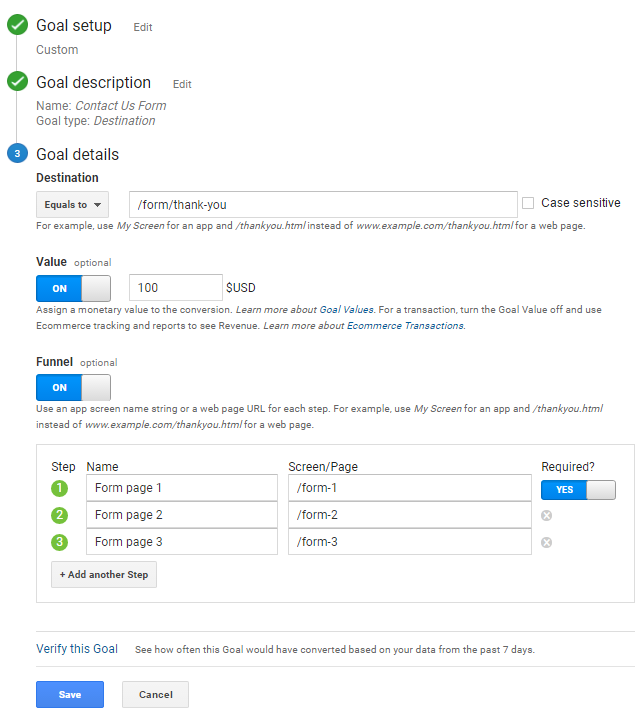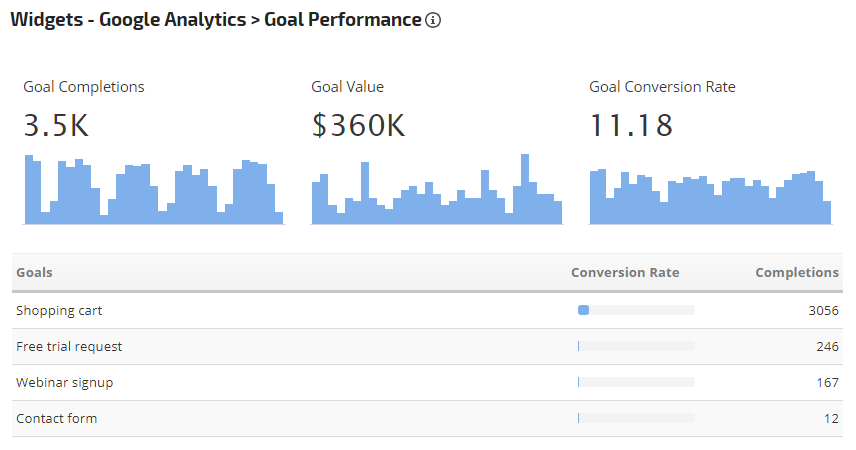Key Insights on What Data Is Google Analytics Goals Unable to Track
Key Insights on What Data Is Google Analytics Goals Unable to Track
Blog Article
Discover the Limitations of Google Analytics Goals: Introducing the Information Types That Remain Untrackable
As companies increasingly count on data-driven decision-making, recognizing the constraints of devices like Google Analytics becomes extremely important. While Google Analytics Goals deal beneficial insights into user interactions, there exist information kinds that thwart monitoring, posturing difficulties to an extensive understanding of user actions.
Insufficient Individual Journey Tracking
Incomplete customer journey tracking within Google Analytics can hinder the capacity to precisely assess user behavior. When the customer trip is not fully tracked, there are gaps in the information that avoid a detailed understanding of just how individuals engage with a website. This absence of understanding can cause missed out on chances for optimization and enhancements to the user experience.
One common issue with insufficient customer trip monitoring is the lack of ability to see the complete course that users take before finishing a goal or leaving the site. Without this information, it is testing to identify where users might be experiencing obstacles or rubbing factors that prevent them from transforming. Additionally, insufficient tracking can cover the effect of specific marketing initiatives or website changes on customer habits.
To address this constraint, it is essential to set up correct monitoring mechanisms within Google Analytics to record the whole individual journey. This might entail setting up event monitoring, goal funnels, or using tools like Google Tag Manager to make certain that no vital communications go unrecorded. By getting an extensive sight of the customer trip, web site owners can make more informed choices to enhance user interaction and drive conversions.
Acknowledgment Challenges
Browsing with acknowledgment challenges in Google Analytics requires a complete understanding of how different touchpoints contribute to the overall conversion procedure. Attribution challenges occur from the intricacy of modern customer journeys, where customers interact with several channels before converting.
One usual acknowledgment obstacle is the problem in attributing conversions to the correct source, specifically in situations where users communicate with multiple channels prior to converting. This can cause mistakes in figuring out which advertising and marketing initiatives are driving one of the most conversions. Additionally, cross-device tracking poses an additional attribution challenge, as users commonly change between devices during their trip, making it testing to track their interactions seamlessly. Marketing professionals should thoroughly interpret and assess acknowledgment information to make enlightened choices and optimize their advertising and marketing approaches successfully.
Offline Conversions
Given the difficulties related to attributing conversions precisely in online networks, the dimension of offline conversions provides a substantial chance for marketers looking for an extra extensive understanding of their consumers' journey. Offline conversions refer to actions that customers take in the physical globe, such as making acquisitions in brick-and-mortar shops or over the phone, participating in events, or involving with printed products - what data is google analytics goals unable to track. These conversions are essential for companies that run both online and offline, as they provide important understandings right into the efficiency of marketing projects throughout different touchpoints
Tracking offline conversions typically posed a substantial obstacle for online marketers, as it was challenging to attach these actions back to certain on-line communications accurately. With advancements in innovation, such as the assimilation of CRM systems, one-of-a-kind identifiers, and promo code codes, organizations can now bridge the void in between online and offline data to acquire a more holistic sight of consumer habits. By successfully determining offline conversions, online marketers can enhance their techniques, assign sources extra effectively, and eventually enhance the general client experience.
Cross-Device Tracking
Cross-device tracking plays a crucial function in recognizing the interconnected nature of customers' electronic communications throughout several tools. In today's omnichannel globe, where users effortlessly switch over in between mobile phones, tablet computers, and desktop computers, tracking their behavior throughout these gadgets is important for marketers to obtain a comprehensive sight of their customer trip.

Moreover, privacy worries and regulations such as GDPR and CCPA have even more challenging cross-device monitoring. With users demanding more control over their data and increased constraints on tracking technologies, marketing professionals have to find ingenious and privacy-compliant methods to connect individual interactions across tools.
Dynamic Content Engagement
Understanding customer involvement with vibrant material is crucial in enhancing electronic advertising strategies for improved target market interaction. Dynamic content describes site elements that change based on user actions, preferences, or other elements, offering a personalized experience. Nevertheless, tracking customer interactions with vibrant web content positions challenges for standard analytics devices like Google Analytics.
While Google Analytics can track fundamental interactions like clicks go to website and page sights, it may struggle to capture even more nuanced interactions within dynamic material. what data is google analytics goals unable to track. Metrics such as time spent on specific vibrant elements, hover activities, or interactions within pop-ups are typically not easily quantifiable utilizing basic monitoring methods. This constraint prevents online marketers' capacity to fully comprehend how customers are involving with dynamic web content and tailor their approaches accordingly

Verdict
Finally, Google Analytics objectives have limitations in tracking insufficient user journeys, associating conversions accurately, catching offline conversions, tracking cross-device communications, and gauging vibrant content engagement. These restrictions highlight the significance of exploring extra tracking techniques and devices to acquire a much more detailed understanding of individual actions and conversions past what Google Analytics can supply.
While Google Analytics Goals deal important insights right into individual interactions, there exist data kinds that thwart monitoring, posturing obstacles to an extensive understanding of customer habits.Incomplete user trip tracking within Google Analytics can prevent the capacity to properly assess individual behavior. When the customer journey is not totally tracked, there are spaces in the data that stop a thorough understanding of just how check out this site individuals interact with a website.One common concern with incomplete user journey tracking is the failure to see the full course that customers take in the past completing an objective or leaving the site. By gaining a comprehensive sight of the user journey, site owners can make even more informed choices to boost individual involvement and drive conversions.
Report this page